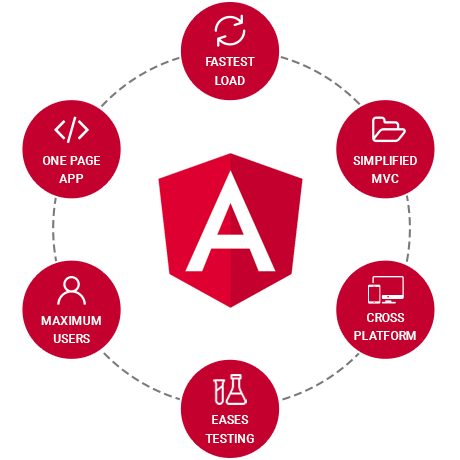Index Surge: Amplifying Your Insights
Stay updated with the latest trends and news across various industries.
Angular Adventures: The Quest for Seamless Web Apps
Dive into Angular Adventures and unlock the secrets to creating seamless web apps that captivate and engage users! Join the quest now!
Mastering Data Binding in Angular: Tips and Tricks for Seamless Apps
Data binding is a core feature in Angular that facilitates communication between the component and the template. Mastering data binding is essential for building seamless applications. There are primarily two types of data binding in Angular: one-way data binding and two-way data binding. One-way binding is effective for displaying data from the component to the view, ensuring that any changes in the model are reflected in the UI. In contrast, two-way data binding synchronizes the data between the model and the view, making it easier to handle user input. Understanding when to use each type is key to creating efficient and responsive applications.
To enhance your proficiency in data binding, consider implementing these tips and tricks:
- Utilize Angular's built-in directives like
*ngForand*ngIfto simplify your templates and improve performance. - Leverage
ngModelfor two-way data binding in forms, allowing for real-time updates between the user interface and the underlying data model. - Be mindful of change detection strategies such as
OnPushto optimize your application's performance, especially when processing large datasets.

Exploring Angular's Dependency Injection: The Key to Scalable Applications
Angular's Dependency Injection (DI) is a powerful design pattern that plays a crucial role in developing scalable applications. By enabling components to receive their dependencies from external sources rather than creating them internally, DI fosters a clean separation of concerns. This not only enhances testability but also promotes reusability across various parts of an application. With Angular's DI system, developers can easily manage the lifecycle of services and keep their application architecture organized, making it easier to scale as the application grows.
One of the standout features of Angular's Dependency Injection is its hierarchical injector system. This allows different parts of an application to have their own instances of services, or share a single instance depending on the scope required. As a result, developers can optimize performance and memory usage while ensuring that critical services are available where needed. By understanding and implementing Angular's DI effectively, developers can build resilient, maintainable applications that can easily adapt to user requirements and changes in technology.
What Makes Angular the Go-To Framework for Dynamic Web Applications?
Angular has emerged as a leading choice for developers creating dynamic web applications due to its powerful features and robust performance. One of the key aspects of Angular is its two-way data binding, which ensures that any changes made in the application’s user interface are instantly reflected in the underlying data model and vice versa. This seamless synchronization enhances efficiency and significantly reduces the need for additional boilerplate code, allowing developers to focus on delivering engaging user experiences.
Another compelling reason why Angular is favored in the realm of dynamic web applications is its component-based architecture. This modular approach simplifies both the development and testing processes, enabling developers to create reusable components that can easily be integrated across various parts of an application. With a rich set of tools for building applications, including a robust CLI, extensive documentation, and an active community, Angular empowers developers to quickly build and scale dynamic web applications with ease.